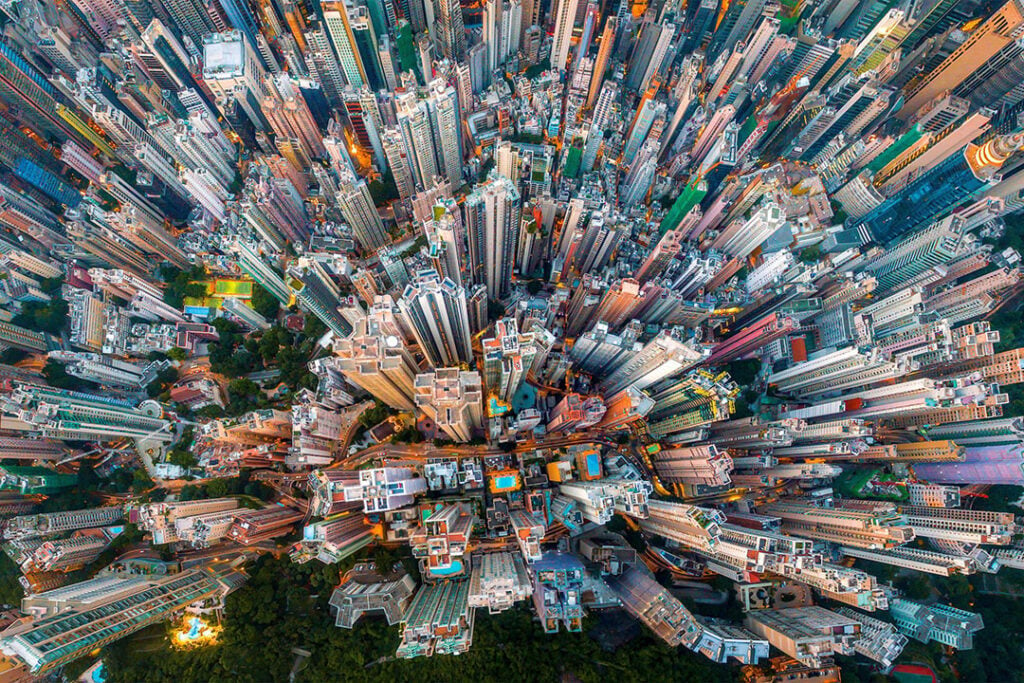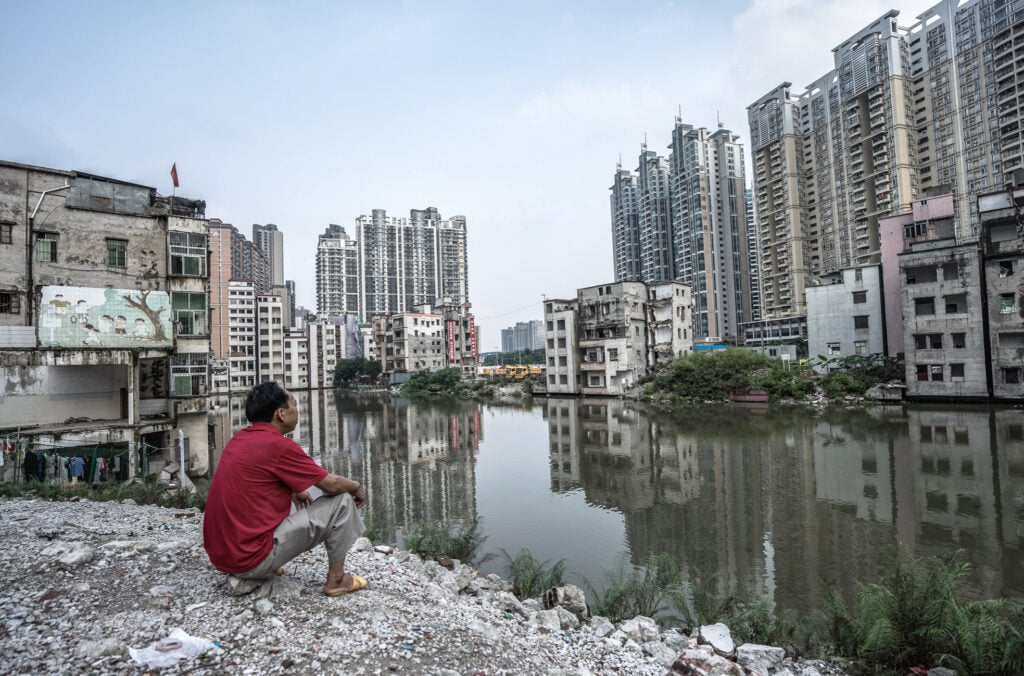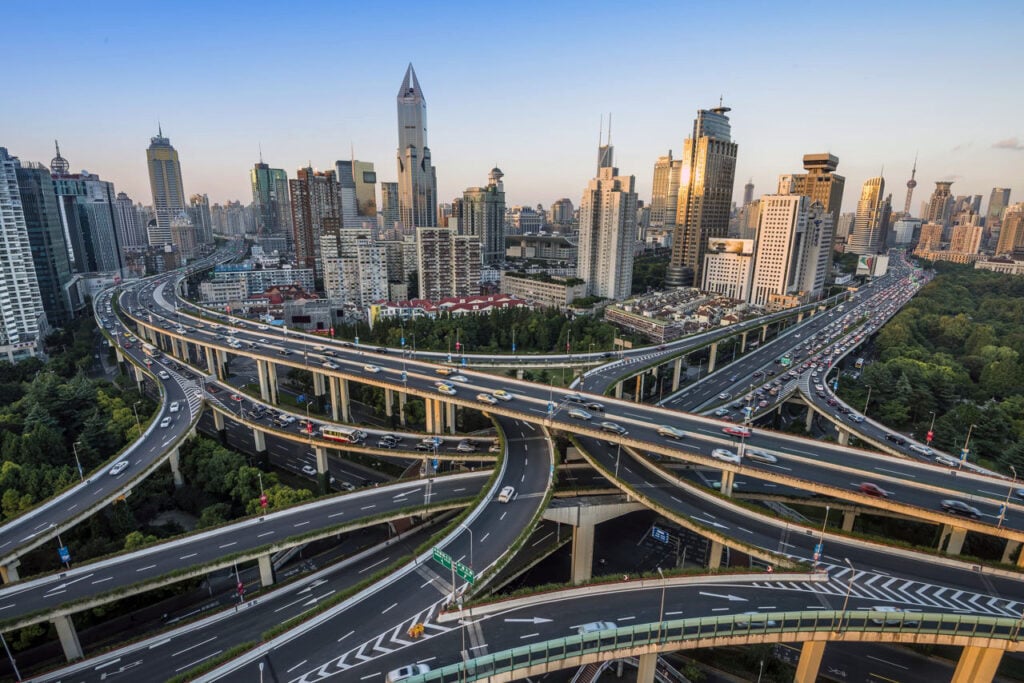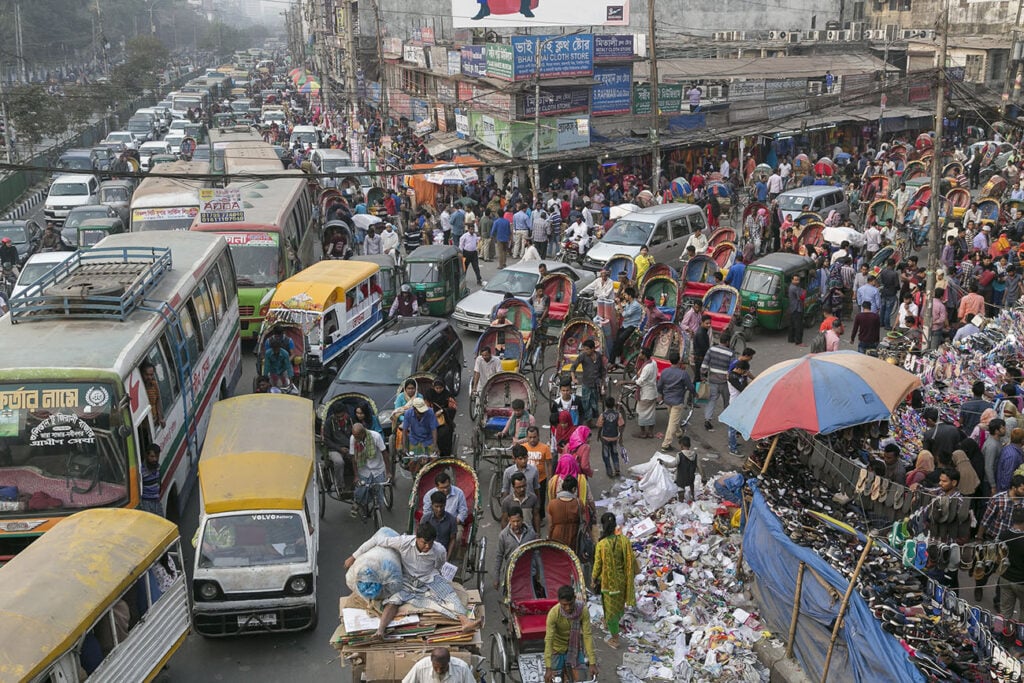
February 25, 2022
Little more than a decade from now, two-thirds of the world’s largest cities will be in Asia, at least four of them with populations exceeding 30 million.
Gottman’s term, coined 61 years ago, is now somehow too spare to embrace what is underway in places like Dhaka, Hong Kong, Tokyo, Bangkok, Mumbai, Seoul, Shenzhen, and Bangalore, to name a few modern mega-cities. The Philippines alone has three of the most densely populated cities in the world, topped by Manila, where 107,000 people are crammed into each of its 17 square miles. Our language lags behind the reality: At the current pace, for instance, 90 new cities will be born in Asia, each larger than San Jose, California (population around 1 million in 2019). A little more than a decade from now, two-thirds of the world’s largest cities will be in Asia, at least four of them with populations exceeding 30 million.
The deCoding Asian Urbanism exhibition is a sequence of discrete rooms, beginning with a world map depicting relative city densities, and ending with a scrolling video display of bar graphs showing the growth of cities over time, from 1500 to 2100—a devastating flash of numbers that summarize the rise and fall of empires and the concomitant rise and fall of cities. Between these two data sets, one is immersed in moving images of intensive street life in Asia, filmed and edited into flowing kaleidoscopes by artist and filmmaker Miriam Kuhlmann, maps of Asian cities at the birth of colonialism (tiny) and today (enormous), photos of glistening prosperity side-by-side with grinding poverty, and the architectural propositions that embrace all of this dramatic change.
By far the most arresting illustration in either the book or the exhibition is a composite assembled by Columbia sociologist and globalization expert Saskia Sassen. Consuming the foreground is a shantytown made of thousands of rusted, corrugated boxes, slammed together as if by a typhoon. Occupying the background, as if painted onto the horizon, is a skyscraper oasis, as distant as a cruise ship and equally impervious to the vicissitudes of weather or market forces. Sassen’s trompe l’oeil is so compelling because it is so easy to believe. We know that this is somewhere—if not now, sometime in the near future.

The burgeoning Asian megalopolis confronts a paradox that, increasingly, afflicts older, Western cities whose roots in the pre-automotive age, though frayed, still offer, in Hannah Arendt’s famous phrase, “a space of human appearance.” The demands of hyper-capitalism and global corporate wealth dictate a new urban form, designed essentially as landing pads for an international elite. Farooq Ameen, deCoding’s editor, curator, and founding principle at City Design Studio, notes that they feature “airports, hotels, malls, business parks and factories, gated skyscraper ‘communities’ and office towers, dotted with virtuoso architecture” as the marker for arriviste economies controlled largely by totalitarian governments. The images of such places are projected worldwide, in glossy shots on magazine covers, in news accounts, and on architect’s webpages.
Against this placelessness is pitted the vitality of the vernacular, the dynamism of the dispossessed, whose lives are built around historical memory, cultural avowal, the immediacy of personal encounter. This counter-reality is played out, all too frequently, in the lower depths. In the shadow of global capital’s imposture glamour—and in no way glamorous—are the informal “cities,” like Mumbai’s Dharavi, thought to be Asia’s largest slum.
Life here is constructed of personal relationships, lineage, trust, and relentless poverty. Nevertheless, an ingrained, natural civic enterprise persists, percolating from the streets up, and out. Qingyun Ma, former dean of the School of Architecture at the University of Southern California, says in one of several dialogues contained in the book: “Life seems to be able to reorganize itself in a very nimble, flexible way and…activities that happen around any physical construct are never programmed.” So, spaces are simply claimed, usually illegally. Eat a bowl of noodles on the sidewalk in Beijing, occupy Panthapath street in Dhaka for Friday midday prayers, take over every nook and cranny of the sky walkways in Hong Kong on “maids day off.”

The assumptions of western cities are tossed out. The idea of an ordered, and orderly, choreography of public and private space is nonexistent. In some fundamental way, you either live in a western construct, imposed from outside, or you live in Asia, where a sidewalk cannot be designed for walking, as it might be in Paris, because that’s where someone sleeps every night.
There are no easy answers to reform—literally—what the Indian architect Charles Correa noted 30 years ago was “a brutal mismatch between the form of our cities and the way we use them.” Yet, refashioning Asian cities is a more urgent task than ever before if they—and many other developing cities, some lodged within the so-called First World—are to become something more than models of the dislocation imposed by the exportation of wealth from the periphery to the centers of finance capital.
This work, says Ameen, requires “urban acupuncture,” a more nuanced, bottom-up approach to building and planning. “Cities…must rely on specific, smaller-scale interventions within the urban fabric that impact the larger context of the city,” he writes.

Examples highlighted in both the book and exhibition include Diana Balmori’s Public Administration Town (PAT) in Sejong City, Korea, and Hamzah & Yeang’s Solaris Tower in Singapore; projects that use landscape to relieve the stress of the built urban environment. Where PAT embeds all of the city’s ministry buildings into nature by creating a continuous linear rooftop park, Solaris conserves a remnant of nature in Singapore’s central city by shaping the building around the original plot. Architecture also has the power to help stem the flow of migrants from the countryside to the city, Ameen argues. Kashef Chowdhury’s Friendship Hospital, in Satkhira, Bangladesh—one of the country’s poorest places—inverts the formula, introducing the urban into the rural. The hospital is made up of small spaces, courtyards, and little piazzas. The architecture has minimal impact on the landscape yet, with luck, provides a village with a small offering of betterment and stability. “I ask myself whether the children are better off in their village because of the amenities offered by this project? Or is this person better off as someone who is moving to the city…into a future of uncertain employment and housing?” Chowdhury wonders.
For Ameen, such projects apply Buckminster Fuller’s principle of adjusting an airplane’s “trim tabs,” which allow a huge airship like a 747 to turn around. The architectural and urban tweaks, he believes, will reshape entire cities.
One hopes. These, like so many other architectural schemes, rely on governmental goodwill or buckets of private money. The real question is, can a few important and essential fragments spark a groundswell for spatial democracy or will they coax us into a languorous sentimentality for well-intentioned one-offs? In the balance, it should be clear, is the fate of all our cities, inside and outside of Asia.
Would you like to comment on this article? Send your thoughts to: [email protected]
"asian" - Google News
February 26, 2022 at 03:40AM
https://ift.tt/ygjUpPi
DeCoding Asian Urbanism Grapples with Asia's Unprecedented Growth - Metropolis - Metropolis Magazine
"asian" - Google News
https://ift.tt/XbaVCi2
Shoes Man Tutorial
Pos News Update
Meme Update
Korean Entertainment News
Japan News Update

No comments:
Post a Comment